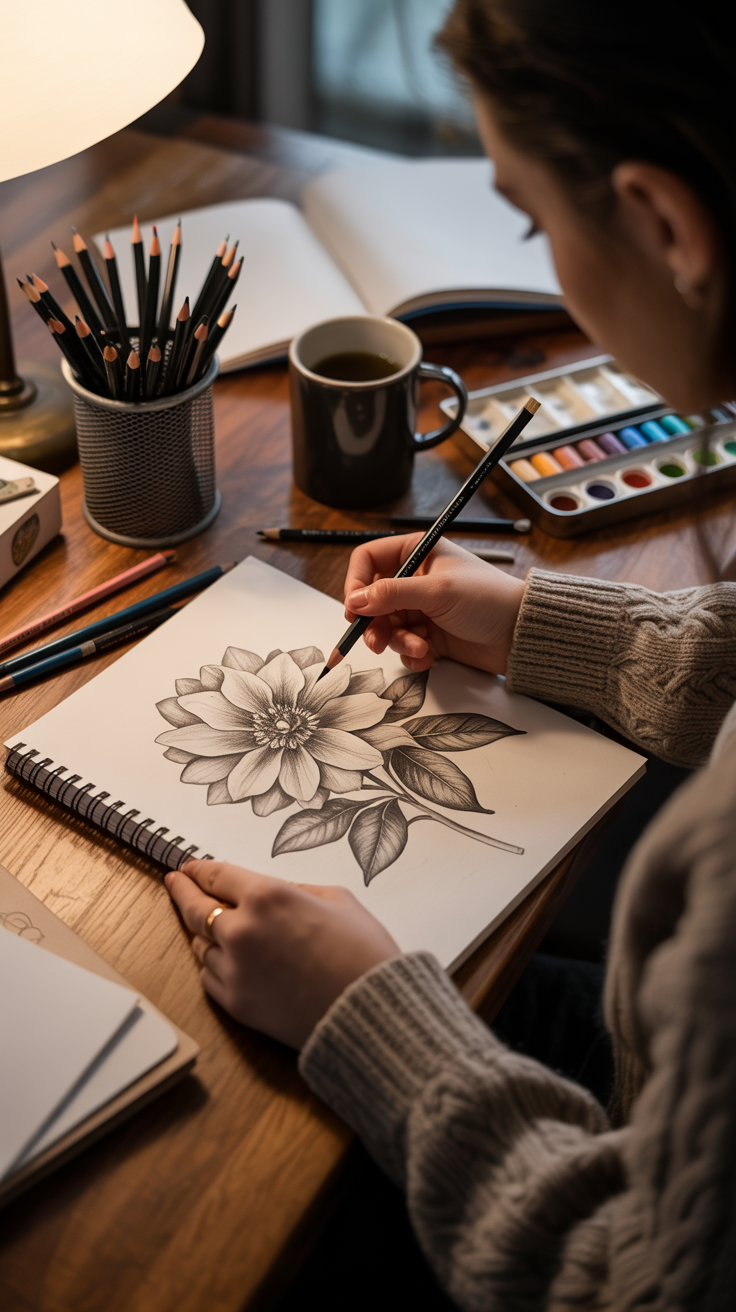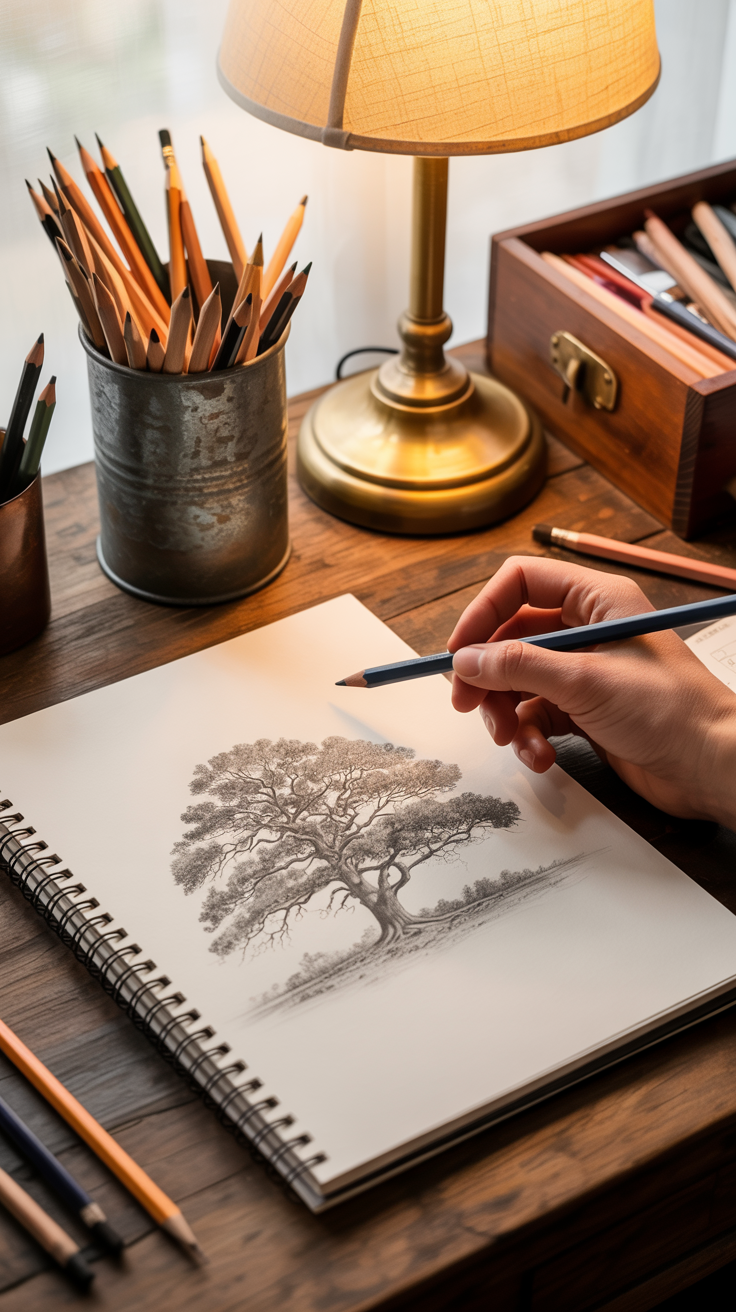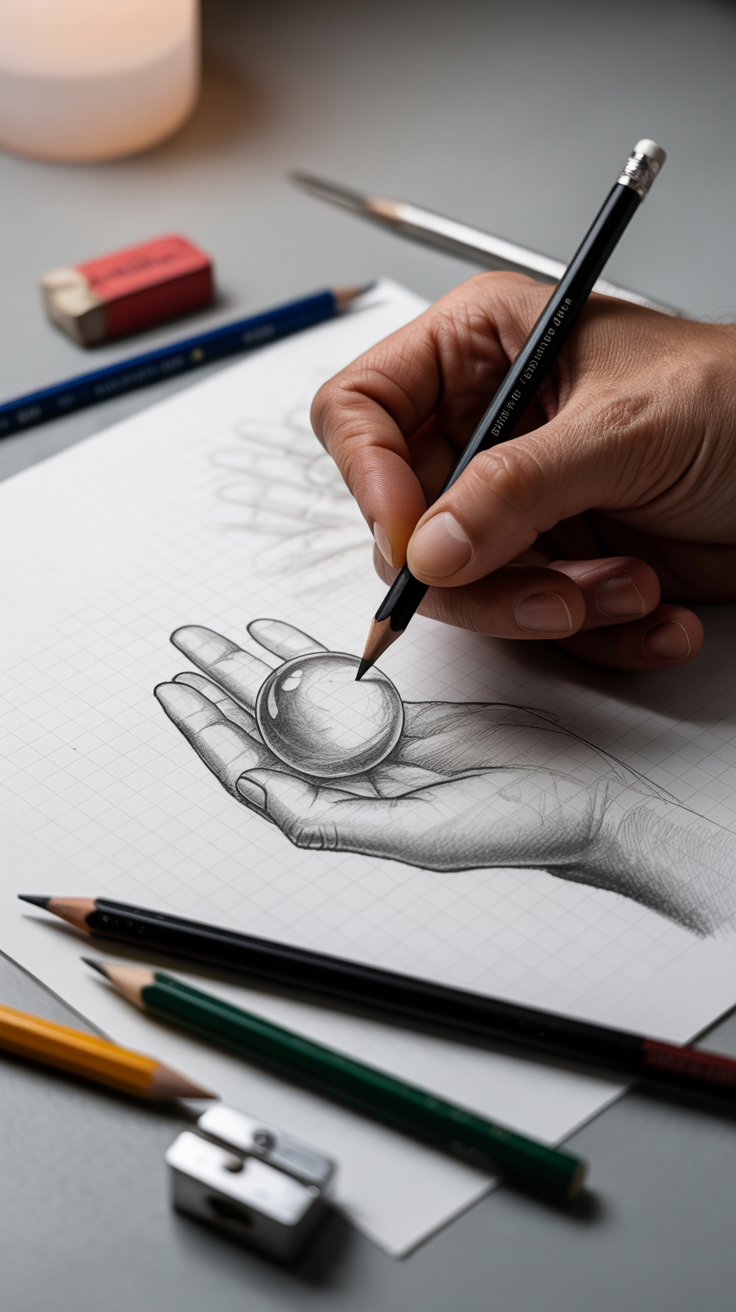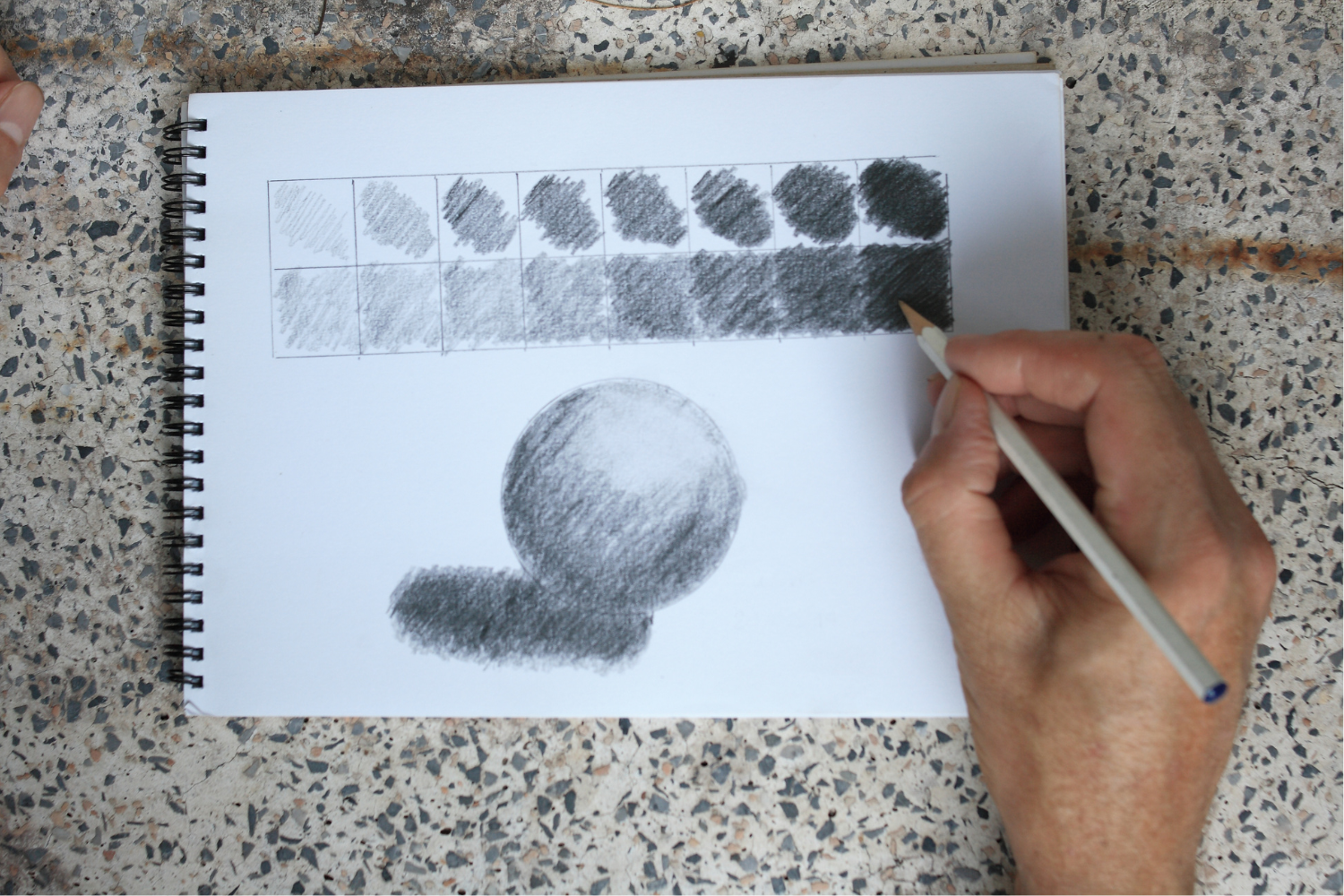Sketching is a fundamental skill for any artist, offering a way to quickly capture ideas, explore compositions, and hone your drawing abilities. Whether you’re just starting or looking to refine your skills, this guide will help you begin your sketching journey with confidence. We’ll cover essential tools, techniques, and tips, along with some product recommendations to set you up for success.

Why Start Sketching?
- Foundation of Art: Sketching forms the basis for many types of art, helping you develop hand-eye coordination and understand shapes, lines, and proportions.
- Creative Expression: It’s a quick and flexible way to express your creativity and ideas on paper.
- Improves Observation: Regular sketching sharpens your ability to observe details and translate them into drawings.
Essential Sketching Tools for Beginners
To get started, you’ll need a few basic supplies. Here are some recommended products to help you build a solid sketching kit:

(This post contains affiliate links, meaning I may earn a small commission at no extra cost to you)
- Sketchbooks and Paper
- Canson Artist Series Universal Sketch Pad: This versatile sketch pad is suitable for various mediums, including pencil, charcoal, and pen.
- Strathmore 300 Series Sketch Paper: A budget-friendly option that provides a smooth surface ideal for beginners.
- Drawing Pencils
- Faber-Castell 9000 Graphite Sketch Pencils: These high-quality pencils provide smooth, consistent graphite and a wide range of hardness grades, perfect for both beginners and professionals..
- Prismacolor Premier Graphite Drawing Pencils: Known for their high-quality graphite, these pencils are great for detailed work and shading.
- Erasers
- Faber-Castell Kneaded Eraser: A soft, pliable eraser that can be shaped to erase fine details without damaging the paper.
- Staedtler Mars Plastic Eraser: Ideal for clean, precise erasing with minimal residue.
- Sharpeners
- Staedtler Metal Double-Hole Sharpener: This sharpener offers two hole sizes, making it versatile for different pencil types.
- Faber-Castell Pencil Sharpener: Compact and efficient, perfect for keeping your pencils sharp on the go.
- Blending Tools
- Tortillions and Blending Stumps: These tools help smooth out pencil strokes and create soft gradients in your sketches.
- Derwent Blender Pencil: Useful for blending and softening lines without smudging.
Basic Sketching Techniques

- Line Drawing: Practice drawing straight and curved lines to gain control over your pencil.
- Shading: Experiment with different shading techniques, such as hatching, cross-hatching, and stippling, to create depth and texture.
- YouTube Reference: “Shading Techniques for Beginners” by RapidFireArt
- Proportions and Perspective: Start with simple objects and work on maintaining correct proportions. Gradually move to more complex subjects and practice perspective drawing.
- YouTube Reference: “Understanding Proportions in Drawing” by Proko
- Gesture Drawing: This involves quick sketches to capture the essence of a subject’s movement or posture, which helps improve your speed and fluidity.
- YouTube Reference: “Gesture Drawing Tips and Techniques” by Proko

Tips for Beginners
- Practice Daily: Consistent practice helps improve your skills faster. Dedicate a few minutes each day to sketching.
- Observe and Sketch: Look at the world around you and try to sketch everyday objects. This enhances your observation skills and helps you draw more accurately.
- Keep a Sketchbook: Maintain a sketchbook to track your progress and jot down ideas or inspiration.
- Don’t Fear Mistakes: Mistakes are part of the learning process. Use them as opportunities to improve and refine your technique.
Conclusion
Starting your sketching journey can be incredibly rewarding and fun. With the right tools and a bit of practice, you’ll soon see improvement in your skills. Equip yourself with the essentials we’ve recommended and begin exploring the world of sketching today. Happy drawing!




